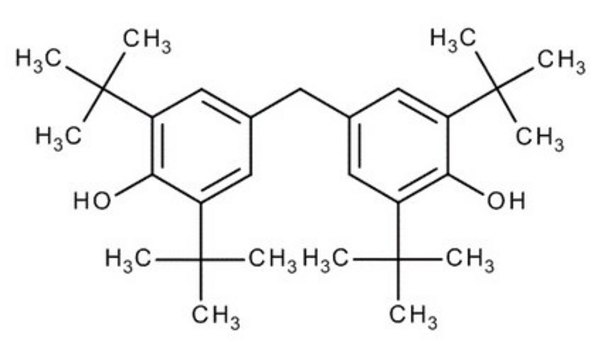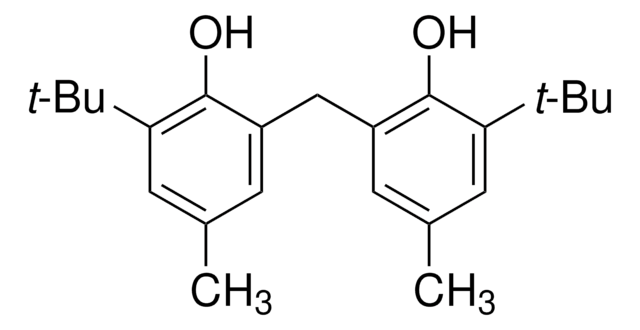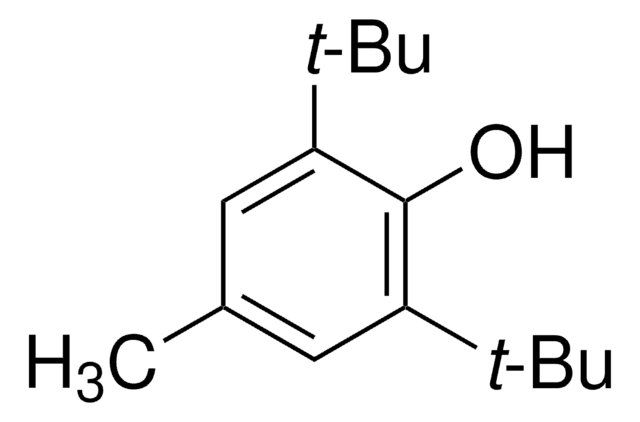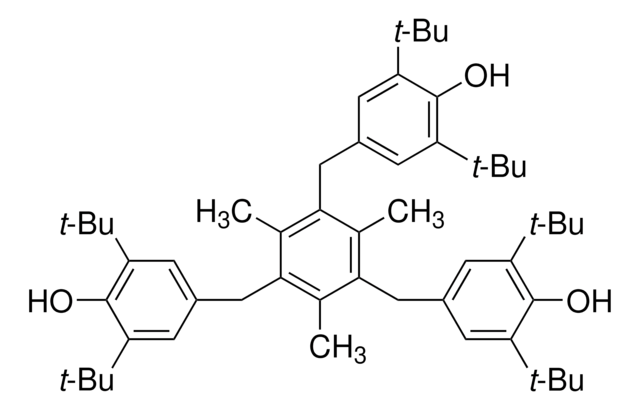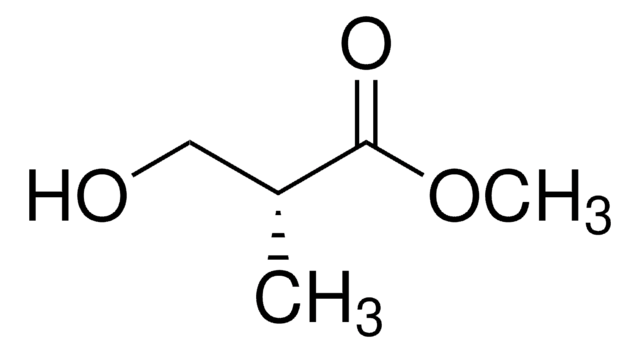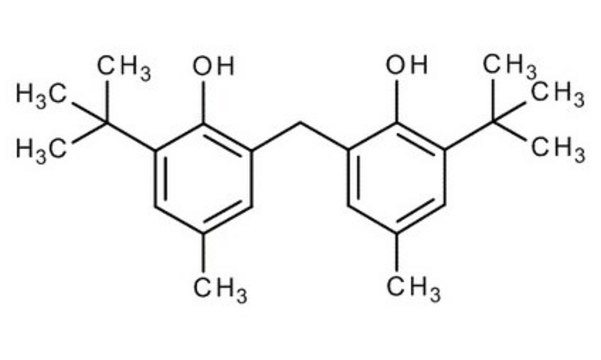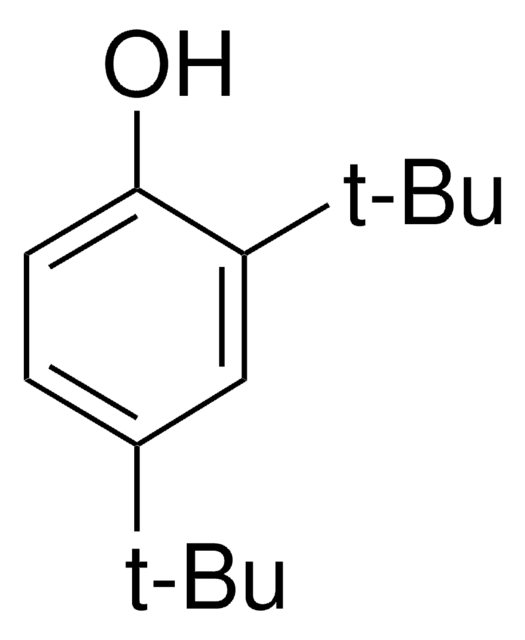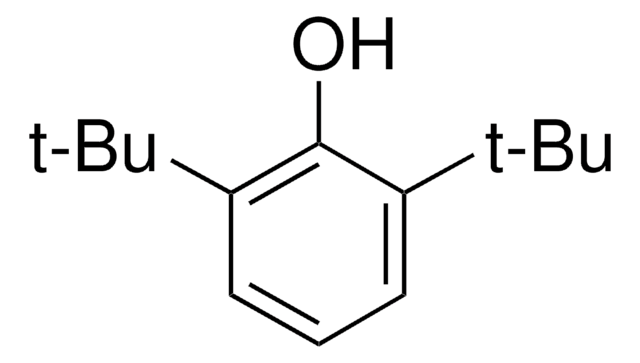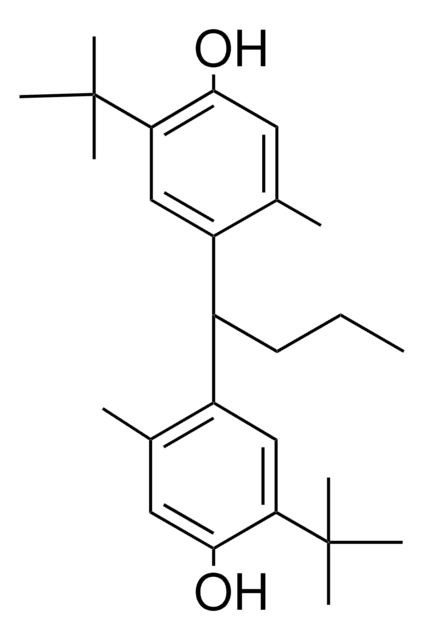All Photos(2)
About This Item
Linear Formula:
CH2[C6H2[C(CH3)3]2OH]2
CAS Number:
Molecular Weight:
424.66
Beilstein:
1916919
EC Number:
MDL number:
UNSPSC Code:
12162002
PubChem Substance ID:
NACRES:
NA.23
Recommended Products
Assay
98%
form
solid
bp
289 °C/40 mmHg (lit.)
mp
155-159 °C (lit.)
SMILES string
CC(C)(C)c1cc(Cc2cc(c(O)c(c2)C(C)(C)C)C(C)(C)C)cc(c1O)C(C)(C)C
InChI
1S/C29H44O2/c1-26(2,3)20-14-18(15-21(24(20)30)27(4,5)6)13-19-16-22(28(7,8)9)25(31)23(17-19)29(10,11)12/h14-17,30-31H,13H2,1-12H3
InChI key
MDWVSAYEQPLWMX-UHFFFAOYSA-N
Looking for similar products? Visit Product Comparison Guide
Application
Antioxidant.
Signal Word
Warning
Hazard Statements
Precautionary Statements
Hazard Classifications
Eye Irrit. 2 - Skin Irrit. 2 - STOT SE 3
Target Organs
Respiratory system
Storage Class Code
11 - Combustible Solids
WGK
WGK 1
Flash Point(F)
Not applicable
Flash Point(C)
Not applicable
Personal Protective Equipment
dust mask type N95 (US), Eyeshields, Gloves
Choose from one of the most recent versions:
Already Own This Product?
Find documentation for the products that you have recently purchased in the Document Library.
O Takahashi et al.
Toxicology letters, 8(1-2), 77-86 (1981-04-01)
Hepatic lipids were studied in Sprague-Dawley male rats given, 2,2'-methylenebis(4-ethyl-6-tert-butylphenol), 2,2'-methylenebis(4-methyl-6-tert-butylphenol), 4,4'-butylidenebis(3-methyl-6-tert-butylphenol) or 4,4'-methylenebis(2,6-di-tert-butylphenol) at a level of 1.135 mmol% for 1 week. 4,4'-Butylidenebis(3-methyl-6-tert-butylphenol) induced fatty liver and increased triglyceride, diglyceride and cholesteryl-ester concentrations, 7.1-, 5.8- and 6.1-fold, respectively. Plasma
Yanfeng Liu et al.
Toxicology in vitro : an international journal published in association with BIBRA, 52, 321-331 (2018-07-22)
The purpose of present study was to investigate the applicability of reconstructed human epidermis model to identify skin corrosive UN GHS Categories 1A, 1B/1C and non-corrosive chemicals in China. By using a commercialized reconstructed human epidermis model, China EpiSkin™ which
Our team of scientists has experience in all areas of research including Life Science, Material Science, Chemical Synthesis, Chromatography, Analytical and many others.
Contact Technical Service